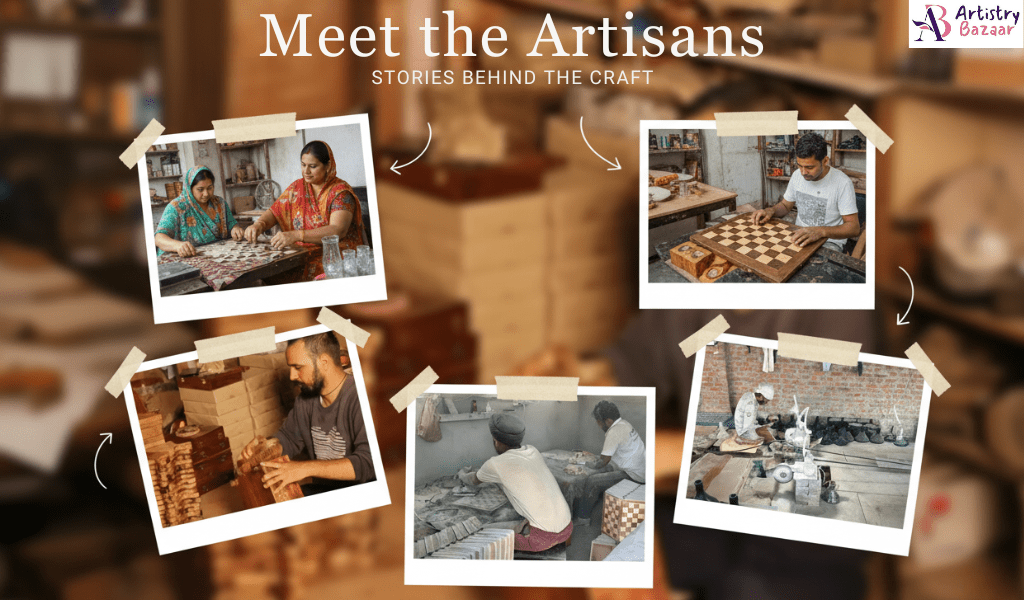Have you ever held an artisanal product in your hands and wondered about the hands that shaped it? There’s a story in every curve, texture, and detail. In an era dominated by mass production, these products stand out, not just for their quality but for the human touch embedded in each creation. Understanding their journey offers not just an appreciation for craftsmanship but a window into culture, heritage, and creativity.
This article takes you behind the scenes, introducing you to the artisans themselves, exploring the techniques they use, and showing why their work continues to captivate collectors, decorators, and everyday admirers alike.
The Art of Artisanship
Artisans are more than just skilled workers—they are storytellers. Their craft often reflects the culture and environment they come from. In many communities, traditional skills are passed down through generations, forming a lineage of creativity and mastery.
- Cultural Roots: Many artisanal crafts have deep cultural significance. Whether it’s a wooden sculpture representing a local deity or a handwoven textile, each item carries historical context.
- Generational Skills: Children often grow up watching their parents work, learning nuances that books and videos cannot teach. This hands-on mentorship ensures authenticity and continuity.
- Passion Over Profit: Unlike mass production, artisans prioritize quality and meaning. Each piece is an expression of individuality, often taking weeks or months to perfect.
By understanding this dedication, we start to see why artisanal products are more than just objects—they are vessels of human expression.
Crafting Stories with Wood
One of the most tangible ways artisans express themselves is through furniture. Artisan home furniture is more than functional—it’s art that tells a story. Every curve, joint, and finish has been meticulously crafted by hand. Artisans often begin with raw wood, studying its grain and natural characteristics before shaping it into a chair, table, or cabinet. The process is meticulous:
- Material Selection: Only the finest woods are chosen, with attention to durability, texture, and visual appeal.
- Hand Tools & Techniques: Many artisans still use chisels, hand planes, and saws, allowing for precise control and intricate designs.
- Personal Touch: Carvings, inlays, and finishes are tailored to make each piece unique, reflecting the artisan’s vision and style.
Owning such furniture is about connecting with the story, skill, and patience embedded in every detail. Unlike mass-produced alternatives, these pieces age gracefully, often becoming heirlooms passed down through generations.
Crafting Joy and Creativity
Beyond functional art, artisans also focus on creating joy. Handmade wooden toys are a testament to creativity, skill, and the magic of childhood. Unlike factory-made plastic toys, these pieces are designed to stimulate imagination while promoting safety and durability.
- Eco-Friendly Materials: Many artisans use sustainably sourced wood and non-toxic paints, creating toys that are safe for children and the environment.
- Educational Value: Toys often incorporate puzzles, stacking features, or modular designs that enhance cognitive development.
- Artistic Expression: Each toy carries subtle artistic elements—from engraved patterns to vibrant hand-painted finishes—making them small works of art.
Parents often appreciate the personal touch that comes with these toys. Each one tells a story, whether it’s inspired by folklore, nature, or a playful concept envisioned by the artisan. These toys aren’t just for play—they become cherished keepsakes.
Where Art Meets Space
Decorating a home is about more than furniture; it’s about personality and atmosphere. Home decor statues crafted by artisans elevate spaces, giving them character and soul. These statues often blend aesthetics with cultural or spiritual significance, serving as conversation starters and focal points.
- Material Diversity: Artisans use stone, metal, clay, or wood, each requiring unique techniques and handling.
- Techniques & Detailing: Carving, molding, or casting by hand ensures intricate designs that mass-produced items cannot replicate.
- Storytelling Elements: Many statues depict historical figures, mythological characters, or abstract concepts, inviting viewers to connect emotionally with the piece.
Artisan-made decor transforms ordinary rooms into spaces that reflect personality, history, and craftsmanship. The combination of technique, passion, and creativity ensures each statue is both timeless and captivating.
A Day in the Life of an Artisan
To truly appreciate artisanal products, it helps to step into the artisan’s world. Their workdays are structured around creativity, precision, and sometimes sheer perseverance.
- Early Start: Many artisans begin at dawn, when light and quiet allow them to focus on delicate work.
- Material Preparation: From sanding wood to preparing clay or metals, the initial stages are often labor-intensive.
- Focused Crafting: The heart of the day involves shaping, carving, painting, or assembling pieces, often requiring deep concentration for hours.
- Finishing Touches: Sanding, polishing, and detailing may take longer than initial shaping, as perfection lies in subtle details.
Despite the labor, artisans often speak of their work with joy and pride. For them, the act of creation is as rewarding as the final product.
Challenges and Triumphs in Modern Times
Artisans face unique challenges in the modern marketplace. Mass production, cheap materials, and digital distractions threaten traditional craftsmanship. Yet, many continue to thrive through innovation and adaptation.
- Market Access: Online platforms have allowed artisans to reach global audiences, connecting their stories to appreciative buyers worldwide.
- Skill Preservation: Workshops and mentorship programs help younger generations learn and continue the craft.
- Sustainability Focus: Emphasizing eco-friendly materials and ethical production gives artisans a competitive edge and resonates with conscious consumers.
Despite hurdles, the triumph of an artisan is seeing their work appreciated, valued, and incorporated into people’s homes—whether as a functional item, a toy, or a decorative statue.
Why Artisanal Products Matter Today
In a world dominated by speed and uniformity, artisanal products remind us of the human touch, creativity, and patience. They carry stories that machines cannot replicate and foster a connection between creator and consumer. Collectors, decorators, and everyday enthusiasts increasingly seek out these products for their uniqueness, craftsmanship, and emotional resonance.
Owning artisanal products isn’t just about possession—it’s about participation in a centuries-old tradition. Each piece tells a story, carries cultural heritage, and embodies dedication that mass-produced items simply cannot match.
To Conclude
Artisans turn ordinary materials into extraordinary experiences. By exploring the lives and work of these skilled individuals, we not only appreciate their craftsmanship but also connect with the culture, history, and creativity behind every piece. Supporting artisans is more than a transaction—it’s a celebration of human skill, imagination, and dedication. By the way, you can support them through ArtistryBazaar. We are a B2B wholesale platform that offers vast handmade products directly sourced from the artisans. We also offer free worldwide shipping, door-to-door delivery, flexible payments (just 30% upfront and 70% before dispatch), and an extra up to 10% off with our promo code.

